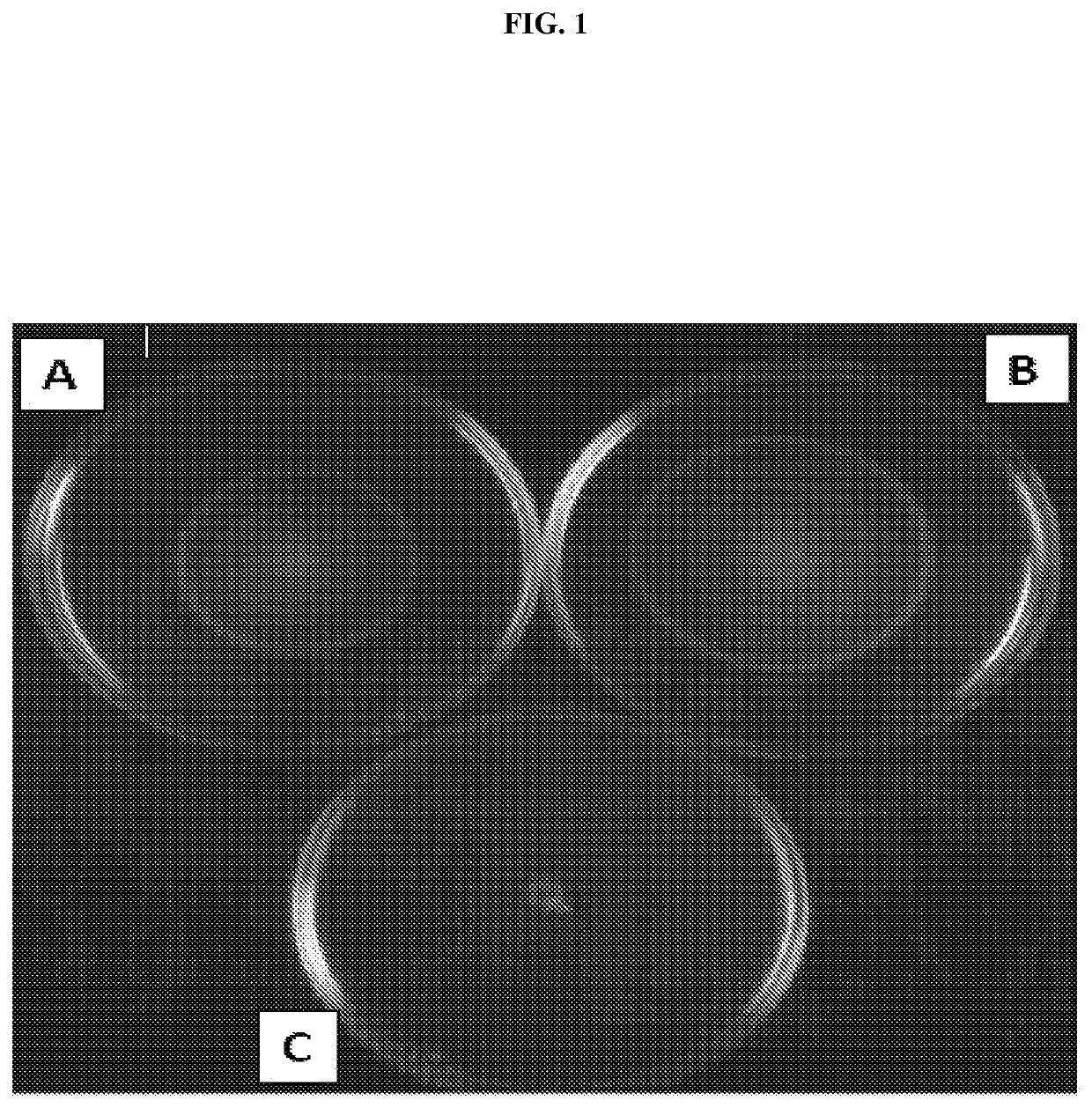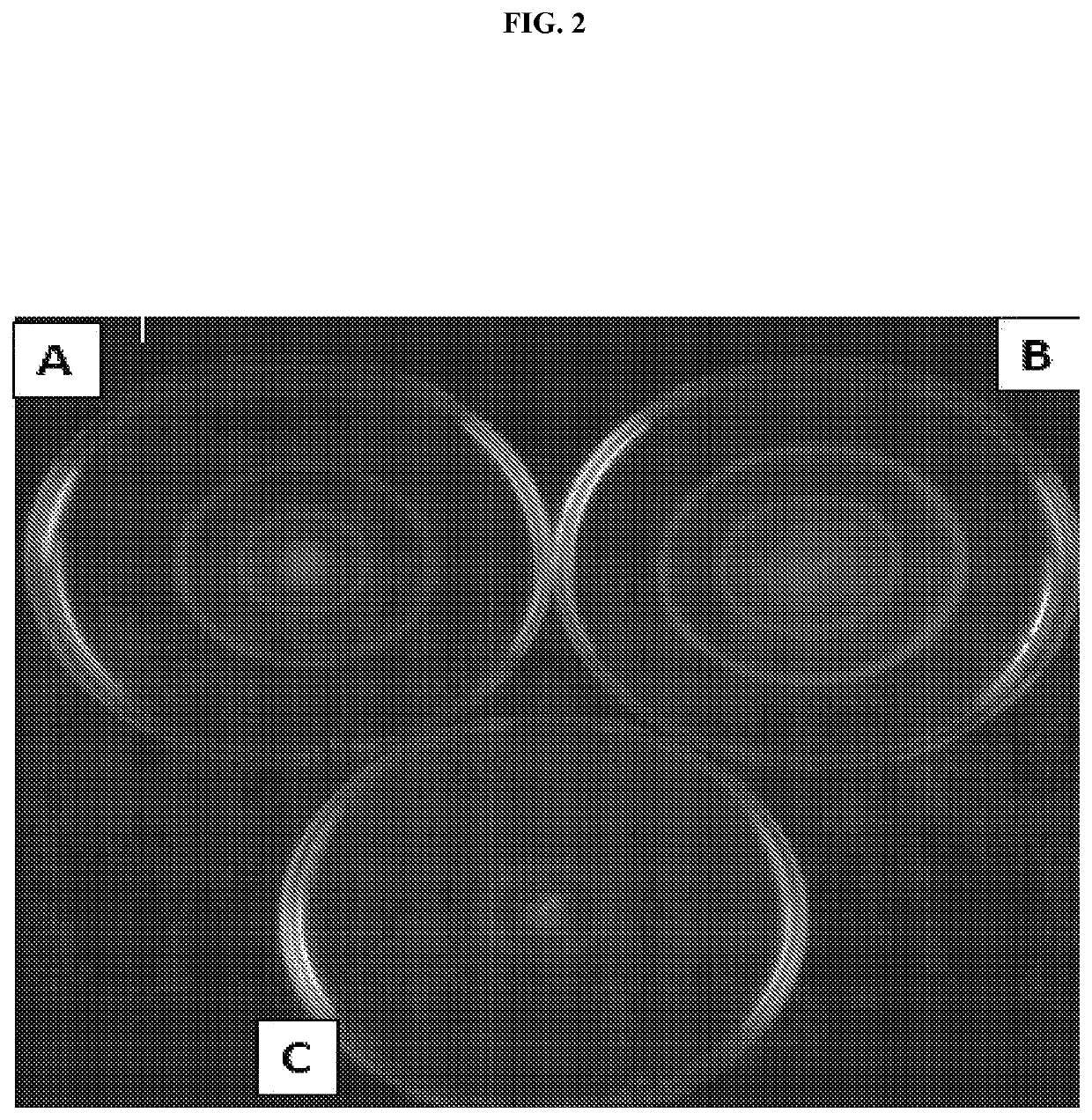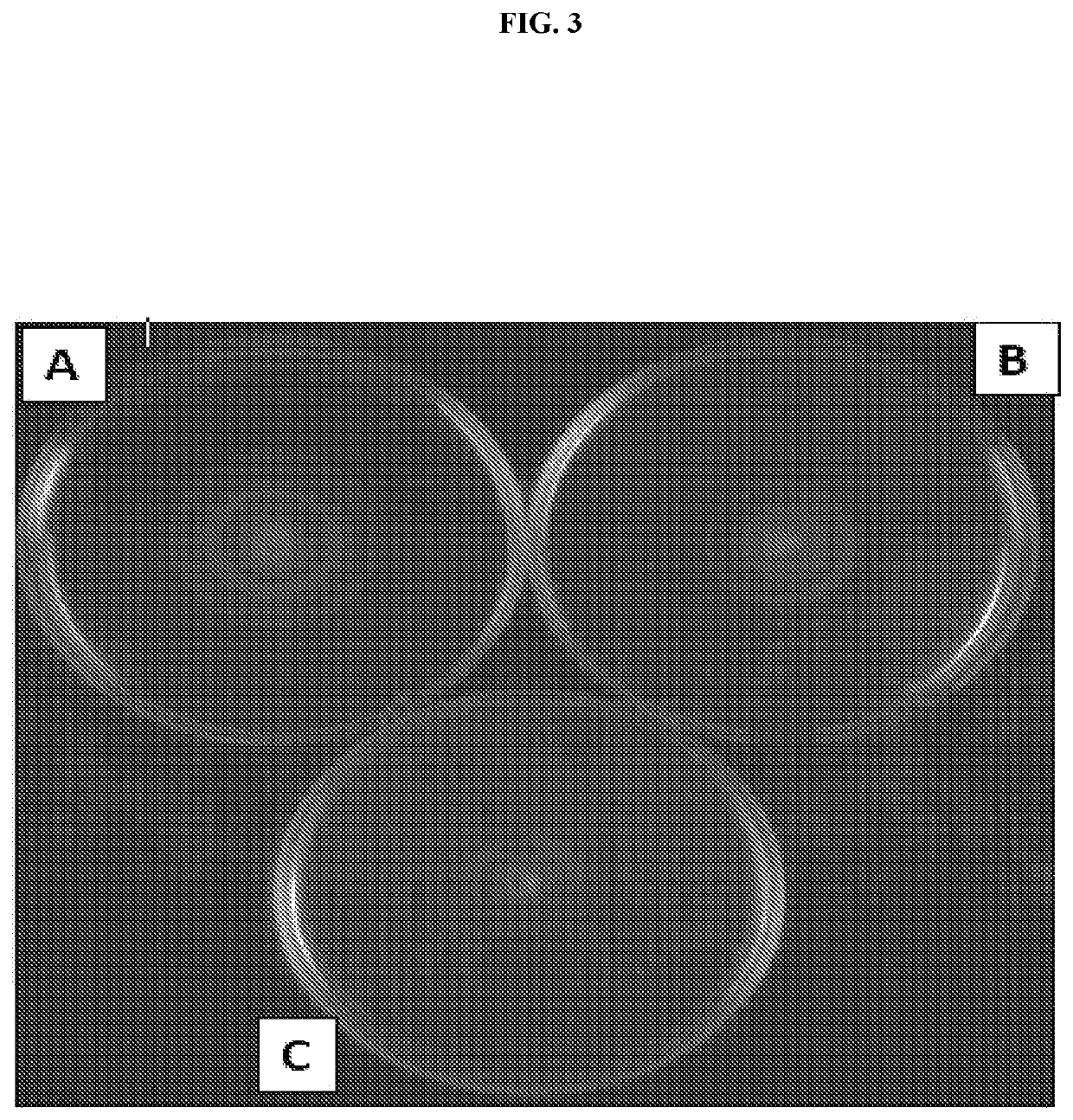Antibodies against microorganisms and uses thereof
a technology of antibacterial agents and microorganisms, applied in the field of antibacterial agents against microorganisms, can solve the problems of high economic cost for food companies and restaurants supplying contaminated poultry products, high cost of production and use of vaccines, and widespread problem of salmonella, so as to prevent the transmission of disease to the human body, and reduce the pathogenic enterobacteriaceae bacterial population
- Summary
- Abstract
- Description
- Claims
- Application Information
AI Technical Summary
Benefits of technology
Problems solved by technology
Method used
Image
Examples
example 1-purification
of Flagella and Recombinant Target Antigens
[0107]Flagella were isolated from whole-bacterial cells. Bacterial cells were grown overnight at 37° C. with shaking. Overnight cultures were centrifuged and the cell pellets resuspended in 10 mM Tris pH 8.0, 0.9% NaCl. Resuspended cells were homogenized and centrifuged for 20 minutes at 10,000 rpm. Supernatants were subjected to an additional round of centrifugation at 10,000 rpm followed by ultracentrifugation at 45,000 rpm for 1 hour. Pellets were resuspended in 1 ml 10 mM Tris pH 8.0, 0.9% NaCl and checked for purity using SDS-PAGE.
[0108]FliC protein was purified from an E. coli expression system. FliC was expressed at 30° C. in E. coli Rosetta (DE3) pLacI cells (Novagen), induced at an absorbance of −0.6 at 600 nm by adding 0.4 mM isopropyl-β-D-thiogalactoside (IPTG) and grown for 3.5 more hours before collection. Cells were lysed by sonication in buffer A (250 mM KCl and 10 mM HEPES, pH 7.4) with 25 μg / ml DNase I, 25 μg / ml lysozyme, 1...
example 2 -
Example 2-Generation of Antibodies in Llamas
[0111]A single llama was immunized with a mixture of purified flagella and recombinant target antigens, FliC, PrgI and FimA. The llama immunization was performed by Cedarlane where 250 μg of each antigen were pooled and injected for a total of four injections. Antigens were mixed at NRC and supplied frozen on dry ice to Cedarlane. At the time of injection, the antigens were thawed and the volume increased to 1 ml with PBS. The 1 ml antigen-PBS mixture was then mixed with 1 ml of CFA or IFA for a total of 2 ml. A total of 2 ml was immunized per injection. Whole llama blood and sera were collected from the immunized animal on days 0, 35, 42, 75 and 87. Sera from days 35, 42 and 75 were then fractionated to separate VHH from conventional antibodies. Fractionation was done according to standard protocols by the National Research Council (NRC). ELISA was used to measure reactivity against target antigens in polyclonal and VHH-enriched fractions...
example 3
Generation of Monoclonal Antibodies
[0112]RNA isolated from purified llama lymphocytes was used to generate cDNA for cloning into phagemids. The resulting phagemids were used to transform E. coli to generate a library of expressed VHH genes. The phagemid library size was ˜2.5×107 total transformants and the estimated number of phagemid containing VHH inserts was estimated to be ˜100%. High affinity antibodies were then selected by panning against Salmonella antigens used for llama immunization. A total of two rounds of panning were performed and clones arising from rounds 1 and 2 were sequenced according to their CDR regions. Phage ELISA was then performed on phage bearing unique single domain antibody clones identified from panning / DNA sequencing to prioritize and select single domain antibodies for soluble expression and purification.
PUM
| Property | Measurement | Unit |
|---|---|---|
| pH | aaaaa | aaaaa |
| pH | aaaaa | aaaaa |
| pH | aaaaa | aaaaa |
Abstract
Description
Claims
Application Information
 Login to View More
Login to View More - R&D
- Intellectual Property
- Life Sciences
- Materials
- Tech Scout
- Unparalleled Data Quality
- Higher Quality Content
- 60% Fewer Hallucinations
Browse by: Latest US Patents, China's latest patents, Technical Efficacy Thesaurus, Application Domain, Technology Topic, Popular Technical Reports.
© 2025 PatSnap. All rights reserved.Legal|Privacy policy|Modern Slavery Act Transparency Statement|Sitemap|About US| Contact US: help@patsnap.com



